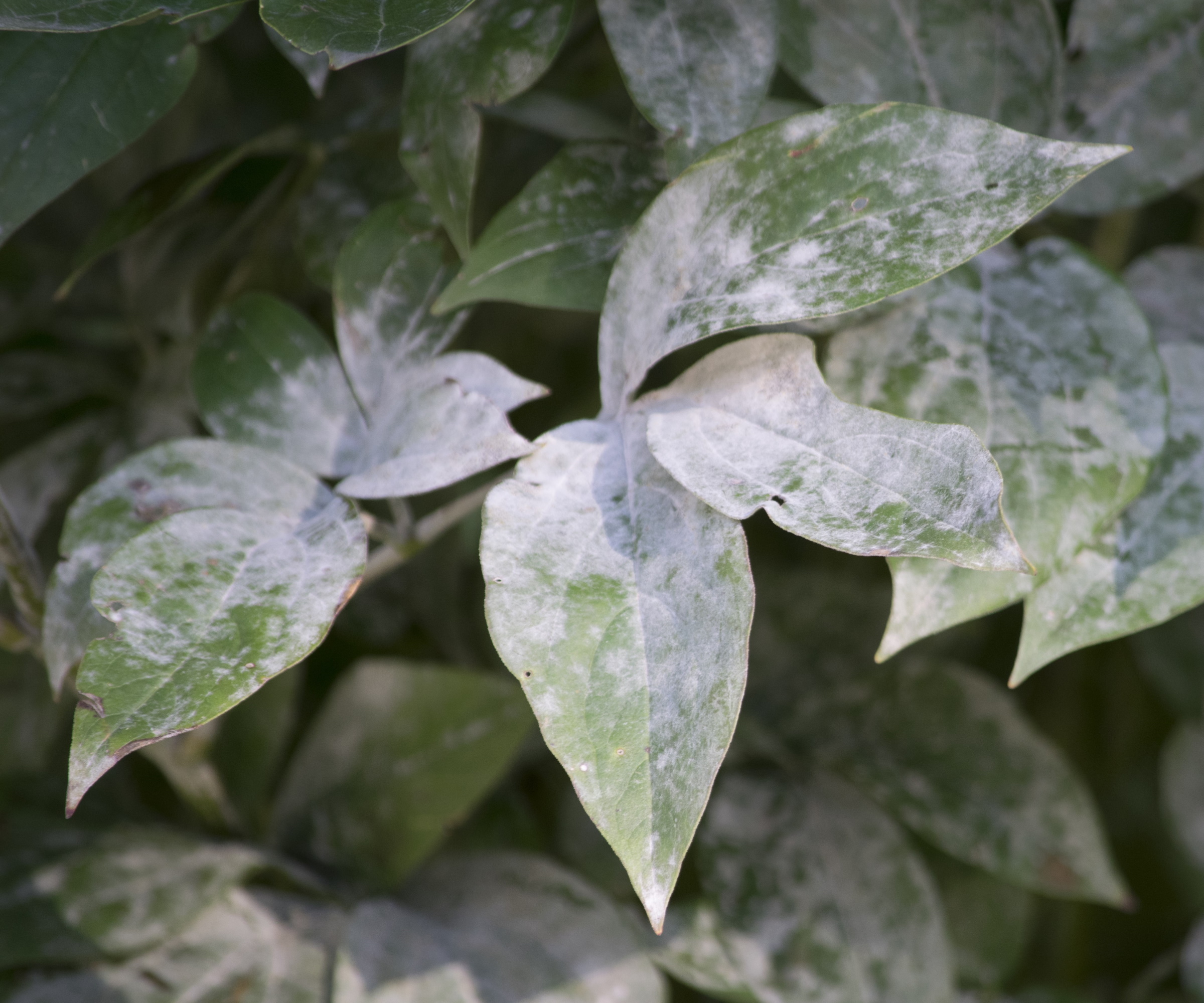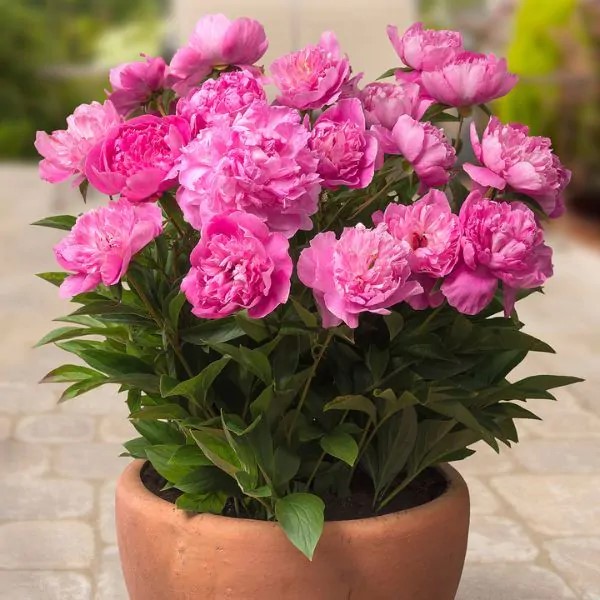Peony pests and problems – expert advice for trouble-free blooms
Peonies are the favorite flower of many gardeners, yet this spring flower is susceptible to pests and diseases


Peonies are one of the most popular flowering plants, adored by gardeners for their blousy, romantic blooms that last for a short time from late spring to early summer. Peony blooms come in a variety of colors, ranging from soft pink to deep mauve, with large flowers measuring up to 6 inches that demand attention.
As with most flowering plants, peonies suffer from a handful of pest and disease problems which can sadly impact blooming and plant health. Many of the usual suspects such as aphids, slugs and spider mites can be problematic, there are also some peony-specific issues for gardeners to be aware of.
For experienced gardeners who have grown peonies for several years, or new gardeners looking to learn how to grow peonies, knowing how to identify and combat peony pests and problems is crucial for successful growing. Here, we share expert tips and advice from professional gardeners.

Peony flowers can measure up to 6 inches in diameter, blooming in a variety of colors
Peony pests and problems
Peony pests and problems will impact blooming and the health of your plants, which can be disappointing for gardeners who grow this stunning ornamental that is celebrated for producing cup-like flowers that steal the show every spring.
Gardeners who can identify the following common pests and diseases are best placed to prevent and swiftly combat problems, helping peony plants to thrive.
Peony Wilt

The first signs of peony wilt are brown or black spots that appear on the foliage of your plant
Peony wilt is perhaps the most common issue that gardeners come across when growing peonies. Peony wilt is so named for the appearance of wilting leaves and drooping flower stems, and is caused by a fungal infection, called botrytis.
'Botrytis is a type of grey mold that usually occurs when conditions are wet and moist,' says Kady Adelman, peony expert and Retail Manager at Adelman Peony Gardens, Oregon.
Design expertise in your inbox – from inspiring decorating ideas and beautiful celebrity homes to practical gardening advice and shopping round-ups.
'The first signs of peony wilting are brown or black spots on the foliage,' Kady adds, as seen in the image above. 'We recommend spraying the entire plant with a product that says it is good for black spot on rose shrubs.' Organic rose sprays are available from Walmart.
'Follow the directions on the product that you are using,' Kady says, 'which will help slow down the spread. If any leaves/stems are completely black/brown, go ahead and prune them off.'
To combat peony wilt, your focus 'should be on removing diseased stems and foliage and prevention,' says Reese Robbins, garden expert and creator of Just Pure Gardening. 'Remove any fallen leaves and debris from around peony plants to reduce the spread of the disease,' Reese adds.
For gardeners considering when to cut back peonies, the ideal time is in the fall. At this time, 'cut back peony stems while also pruning nearby planting, to improve air circulation,' Reese continues. This can help to limit the future spread of mold and disease.
Importantly, as is the case with any infected green waste, ensure that you dispose of it suitably. It is not advisable to compost this waste, as this can cause further problems and infect other plants in the yard.

Kady is a peony expert and retail manager for Adelman Peony Gardens who grow a large collection of peonies over a thirty-acre site in Brooks near Salem, Oregon, in the beautiful Willamette Valley. Adelman now has at least 500 named peonies growing in their fields.

Reese L. Robbins is the founder of Just Pure Gardening, a site full of fruit and vegetable growing guides, garden ideas, and garden product reviews.
Mealybugs

Mealybugs will appear on new, green growth, feeding on the foliage of plants
Mealybugs are small pests that can cause much damage to your peony plants. Knowing how to combat mealybugs in your yard is crucial to ensure that peonies bloom successfully.
Typically found in large numbers, mealybugs will appear white, making identification on green foliage a relatively simple task. 'Mealybugs have a defensive mechanism in that they produce a sticky white substance that appears cotton-like,' Reese says.
Reese recommends using an organic, natural treatment. 'Neem oil is a very effective organic solution when dealing with mealybugs,' Reese says, 'quickly killing the bugs.' Organic products are widely available, such as this neem oil solution from Walmart.
Peony Mildew

Peony mildew will appear like a white powder or dust on the foliage of plants
Mildew is a common plant problem often experienced in mild and humid climates. Mildew is rarely fatal for plants, but is unsightly, and if left untreated it can limit the performance of plants.
When considering how to get rid of powdery mildew, 'acting quickly is important,' says Kady. 'At the first signs of mildew, spray with a product that is good for treating mildew on plants,' such as an organic fungicide spray.
I have battled with mildew on peonies on many occasions, and while it can detract from the beauty of peony blooms, it is rarely something to be worried about. Mildew typically thrives during the spring and summer months, when temperatures rise and when there is increased humidity. So, while it might be unsightly, it tends to be a recurring problem that gardeners must tolerate. Fortunately, we are spoilt for blooms during the summer months so our attention is drawn elsewhere.
'As with peony wilt, it is important to ensure that your plants are getting enough air circulation and getting a good amount of sunlight,' Kady adds. While we seek to cram our borders and backyards full of planting, this can exacerbate the problem, so it might be 'worth giving your peony plants a little more room to breathe.'

This organic spray controls plant diseases such as powdery mildew, black spot, peach leaf curl, rust and other diseases. Perfect for use on vegetables, roses and herbs. This is the ideal spray for those organic gardeners and gardens who want a solution that won't harm the environment.
Ants on Peony Plants

Ants are attracted to peony buds as they secrete a sugary sap just before blooming
Many gardeners ask why peonies attract ants, pondered on an annual basis as ants appear in great numbers on peony buds. 'Ants are not needed to open the peony blooms, this is an old wives' tale,' Kady continues.
'Ants are drawn to peony buds as they secrete a sugary sap just before they are about to bloom, and this foodstuff is sweet and delicious to them.'
It is important to note that ants will do little harm to peonies, and once the buds open and bloom, the ants move on. What's more, ants will control and deter aphids and scale bugs from spreading, so while seeing hundreds of ants crawling over your peony buds might seem concerning, it is nothing to be worried about.
'While they are not something to be worried about, if ants are a nuisance you can use an ant block product that you can find at your local hardware or garden center,' Kady adds, 'or you can shake them off if you want to cut and bring the blooms inside.'
Products such as diatomaceous earth can help to deter ants and insects from peony plants. In addition, consider raiding your spice rack, and using spices to deter common garden pests, with many gardeners suggesting that cinnamon and cloves can be used to repel insects.
Drooping Peony Blooms

It is important to stake and support peony blooms, as large flowers can droop
One final problem to be aware of when growing peonies is that these large blooms can benefit from staking, particularly as the spring weather can often be changeable with high winds and heavy rain.
'Peony blooms are very heavy,' Kady says, 'and they are made heavier after rainfall if water gets in between the petals and weighs them down.' For this reason, peony plants can benefit from staking. For gardeners seeking a project, why not try to build hazel plant supports, for a natural, artisanal look?
'There are many options for supporting plants, including cages, sticks, or different types of supports,' Kady adds. 'We like to use bamboo and string as you can tuck the sticks under the foliage, hiding the supports so it is not such an eyesore.'
Alternative plant supports are available from Walmart.
FAQs
What is the best treatment to use for a peony suffering from mildew?
Mildew should be easy to spot on peony plants, turning leaves white or grey, as seen in the image above. While mildew is rarely fatal for the plant, it can be unsightly, and gardeners are often keen to treat this problem. Use an organic fungicide spray on the affected foliage, repeating the treatment as necessary, ensuring that you follow the instructions on the packaging.
Knowing how to identify and combat peony pests, problems and diseases is important, as swift action can help to resolve any issues. As with all pest and disease control, always consider using organic, natural treatments where possible. For more peony care and growing advice, see our guide on the best approach to deadheading peonies, or how to grow a tree peony.

Thomas is a Content Editor within the Gardens Team at Homes and Gardens. He has worked as a professional gardener for both public spaces and private estates, specializing in productive gardening, growing food and flowers. Trained in Horticulture at the Garden Museum, he has written on gardening and garden history for various publications, including The English Garden, Gardens Illustrated, Hortus, The London Gardener and Bloom. He has co-authored a Lonely Planet travel book, The Tree Atlas, due out in 2024.
